Author: Darshan Gandhi
Translation: DeepTechFlow
Introduction
Over the years, many Web3 startups have faced challenges in expanding and maintaining a stable user base. Despite the initial hype around decentralization, the core issue remains in establishing sustainable long-term business models in competitive fields such as gaming, entertainment, social media, and decentralized finance (DeFi).
Understanding basic economics—such as the relationship between low market value and high fully diluted value (FDV), and the importance of market capital—will increasingly become evident.
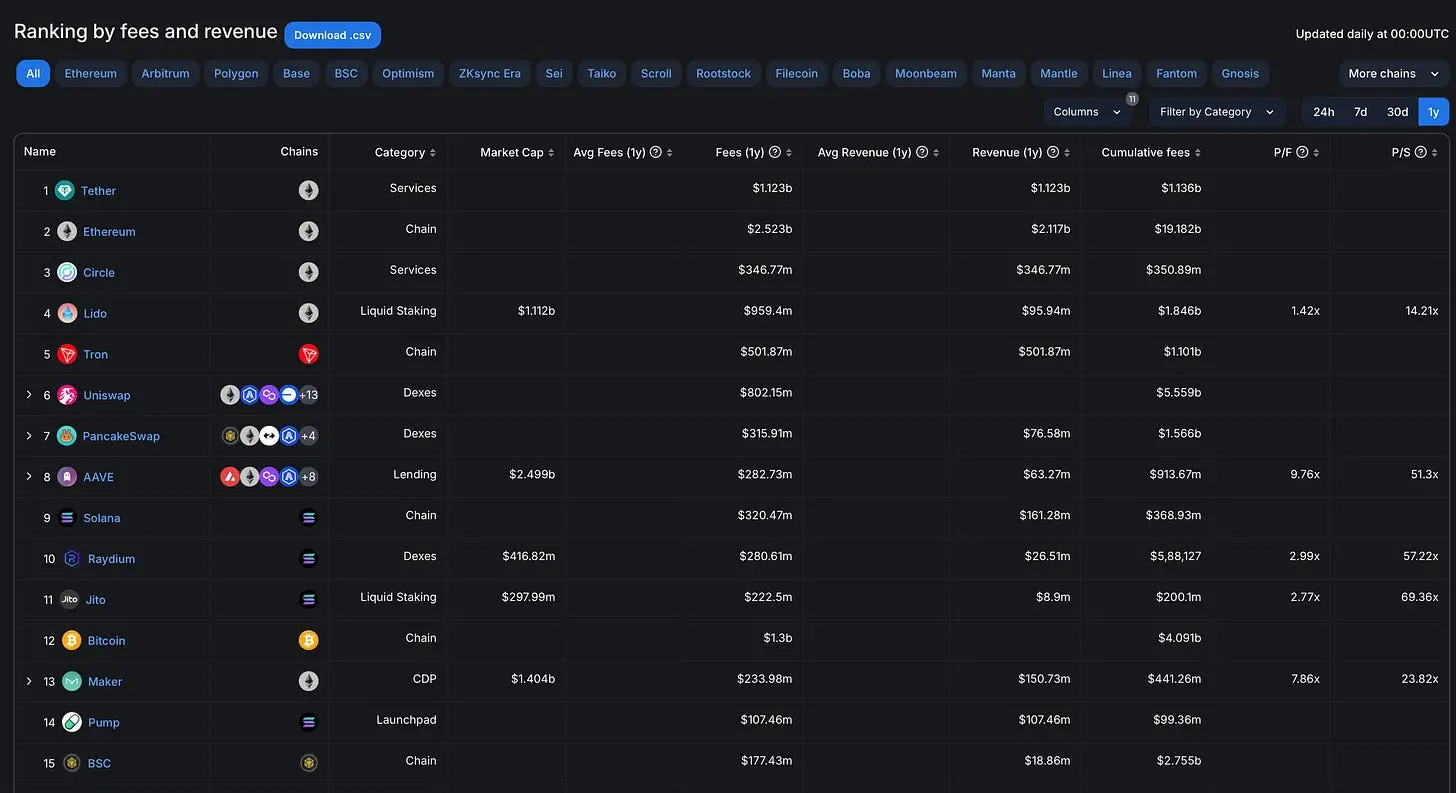
Unfortunately, many projects still prioritize short-term token speculation over sustainable growth. After the peak of the 2021 cycle, many startups failed to even come close to their previous all-time highs (ATH), let alone surpass them (only $BTC and $BNB achieved this among top tokens), and only a few projects managed to survive the 2017-2018 cycle.
A major issue in the past Web3 cycle was the lack of robust business models. While software development cycles typically take 5-7 years to mature, projects like Ethereum have only been around for 8 years, and projects like Solana for less than 5 years. This process is very challenging. As a result, many projects have fallen into the trap of relying on token speculation, which, while providing short-term excitement, has not actually delivered strong long-term value beyond governance.
The imbalance between token speculation and actual value accumulation and utility remains a major gap in the current ecosystem.
I believe that the true potential of Web3 lies in its integration with real-world industries such as energy, artificial intelligence (AI), Internet of Things (IoT), and supply chain. By focusing on building applications in these areas, Web3 can ultimately fulfill its promises of ownership, transparency, and broader societal impact—beyond speculation, creating lasting value.
What's Changing Now?
There is now a clear trend towards creating tokens that are tied to real business models and actual revenue. Projects are no longer relying on speculation and narrative positioning to boost token prices; instead, the focus is on providing real value—by returning value to tokens through mechanisms such as voting rights, service access, or other utilities that promote long-term user engagement through burning and staking.
Investors and users now prioritize projects that offer sustainable benefits. Concepts such as staking, token burning, and user rewards are helping these projects strengthen and ensure their growth. For example, Uniswap recently decided to reward its users through trading and providing liquidity.
This shift indicates that in the future, tokens will not just be tools for secondary market trading, but will become an integral part of projects.
Which Areas Are Performing Well?
Now, let's truly understand which areas or ecosystems are performing well, generating sustainable cash flow, and being actively used by users.
While many projects are still in the development stage or have just started, most are shifting towards identifying important business metrics such as revenue, profit, and user base, rather than just focusing on trading volume and transaction frequency.
Here are some industries that are performing well and are considered to have ample cash flow. These industries face fewer speculative issues but more challenges in the initial stages of launch and distribution. Once these challenges are overcome, these industries will become cash cow businesses.
DePIN
This is one of the hottest areas recently, with attention shifting from fields such as artificial intelligence (AI) and gaming to it, as some projects in this area have shown good performance based on actual usage and metric data. Helium is a leader in this field.
Projects like Helium, a decentralized wireless network, demonstrate the power of real-world utility. Helium's HNT token is earned by users who set up hotspots to provide wireless coverage, and its value comes from the use of Internet of Things (IoT) devices, rather than speculation.
There are also projects like GEOD and Hivemapper, which obtain physical data through crowdsourcing, such as location and dashcam videos, which can be monetized.
All these projects are performing well in terms of revenue generation, capable of producing good cash flow, and converting it into token value growth.
Social Platforms
Web3 social platforms are full of fun and excitement for everyone. Consumer applications are one of the primary ways technology can truly reach millions of users globally. However, consumer cryptocurrencies have faced challenges in adoption for a long time.
Recently, alliances and other companies have been pushing this idea, making blockchains like Solana and Base increasingly suitable for consumers, encouraging development on them.
Applications like Farcaster, Lens Protocol, and Fantasy Top are actually working to change people's perceptions and attitudes towards consumer cryptocurrencies. Some of these applications have been able to generate meaningful revenue and user usage data.
However, it is still early due to the very small user base compared to the broader Web2 world, but it is a good start.
Launch Platforms
Projects face the biggest challenges in the initial stages of launch—they lack the most important things: relevance and distribution channels.
Launch platforms can truly change the game here, providing a platform and an ecosystem of users, investors, and supporters for these projects.
Launch platforms like Pump Fun and Multiplier have been able to generate millions in revenue in a short time, benefiting from the popularity and acceptance of meme coins as a category.
While I personally believe that in the long run, this is not a sustainable model, as it brings more harm than value to the field, it is still necessary to understand different verticals that perform well and draw inspiration from them to build longer-term things in other areas.
DeFi Products
DeFi remains a persistent field—and one of the few categories that can continuously generate substantial income in Web3, with leaders like Uniswap, Aave, Maker, and Curve contributing significant revenue.
I believe these are "boring" but sustainable businesses that will exist in the long term. It would be interesting to explore whether applications can be built based on the principles of DeFi and combined with other areas (such as prediction markets, gaming) to explore whether new markets or perspectives can be opened up.
Web3 vs. Web2 Models
The core difference between Web3 and Web2 companies lies in how they generate revenue and operate. Web2 relies on centralized models such as subscriptions, advertising, and enterprise sales, while Web3 leverages decentralized models such as token economics, transaction fees, staking, and DeFi yields to create value for the platform and its users.
Web2 gains value through:
Controlling user data
Monetizing quality content
Providing platform services
Web3 transfers control to the community through:
Token ownership
Decentralized Autonomous Organizations (DAOs) and governance
Voting and participation incentives
While this decentralization provides new opportunities, it also brings about complex user experiences, regulatory challenges, and scalability issues, such as blockchain congestion and high transaction fees.
Web3 startups face the following challenges in quickly launching products using smart contracts:
Lack of user onboarding convenience
Limited user retention mechanisms
Practicality of products beyond speculative value
To achieve long-term success, the focus must shift towards establishing sustainable revenue models and translating them into real token utility, rather than relying on speculation.
Here is the complete translation of the provided markdown:
Various Revenue-Generating Models in Different Sectors:
Token-Based Models
Tokens drive platform operations and often play a governance role.
As the platform grows, the value of tokens also increases through mechanisms such as burning.
Example: MakerDAO burns MKR tokens when repaying debt, reducing supply and increasing value over time.
Subscription Models
Web3 platforms like Audius offer premium features or content for a regular fee, eliminating intermediaries.
Artists and creators directly profit from audiences, similar to traditional Web2 subscriptions.
Platform Fees
Platforms like Zora earn revenue by charging a small percentage on each transaction.
User activity directly drives revenue growth.
Marketplaces
Platforms like Blur, OpenSea, and Rarible generate revenue by charging a percentage of each NFT/asset sale.
As transaction activity grows, platform revenue increases, directly correlating profitability with user engagement.
DePIN Networks
Projects in this field reward users for contributing real-world resources such as bandwidth, wireless coverage, or location information.
Helium allows users to earn tokens by providing wireless hotspots to support IoT devices.
Decentralized Exchanges (DeXs)
DeFi platforms generate revenue by charging fees for token exchanges or lending services.
For example, Uniswap shares exchange fees with liquidity providers, ensuring both parties receive ongoing revenue.
Social Tokens
Creators mint their own tokens for fans to purchase or trade.
Revenue primarily comes from token sales and fan engagement.
Rally enables creators to establish closer connections with their community through token ownership.
Web3 Gaming/Entertainment - Freemium Model
- Revenue from Web3 games comes from in-game purchases, marketplace fees, or play-to-earn models.
Decentralized AI
Decentralized cloud service providers like Akash Network rent out computing power.
Users pay for these resources using tokens, directly competing with traditional cloud service providers.
Some projects also focus on decentralized training, workflows, data scraping/collection, and other issues.
Launch Platforms
- Launch platforms like DAO Maker help projects raise funds through token sales, earning a percentage or charging fees.
Revenue-Generating Projects
Projects with real-world utility consistently outperform those relying on speculative token economics in the long term. Revenue-driven models are gradually becoming the foundation for the most successful Web3 enterprises, proving their value to users and investors through sustainable business models. The chart provides a comprehensive view of the top revenue-generating crypto projects.
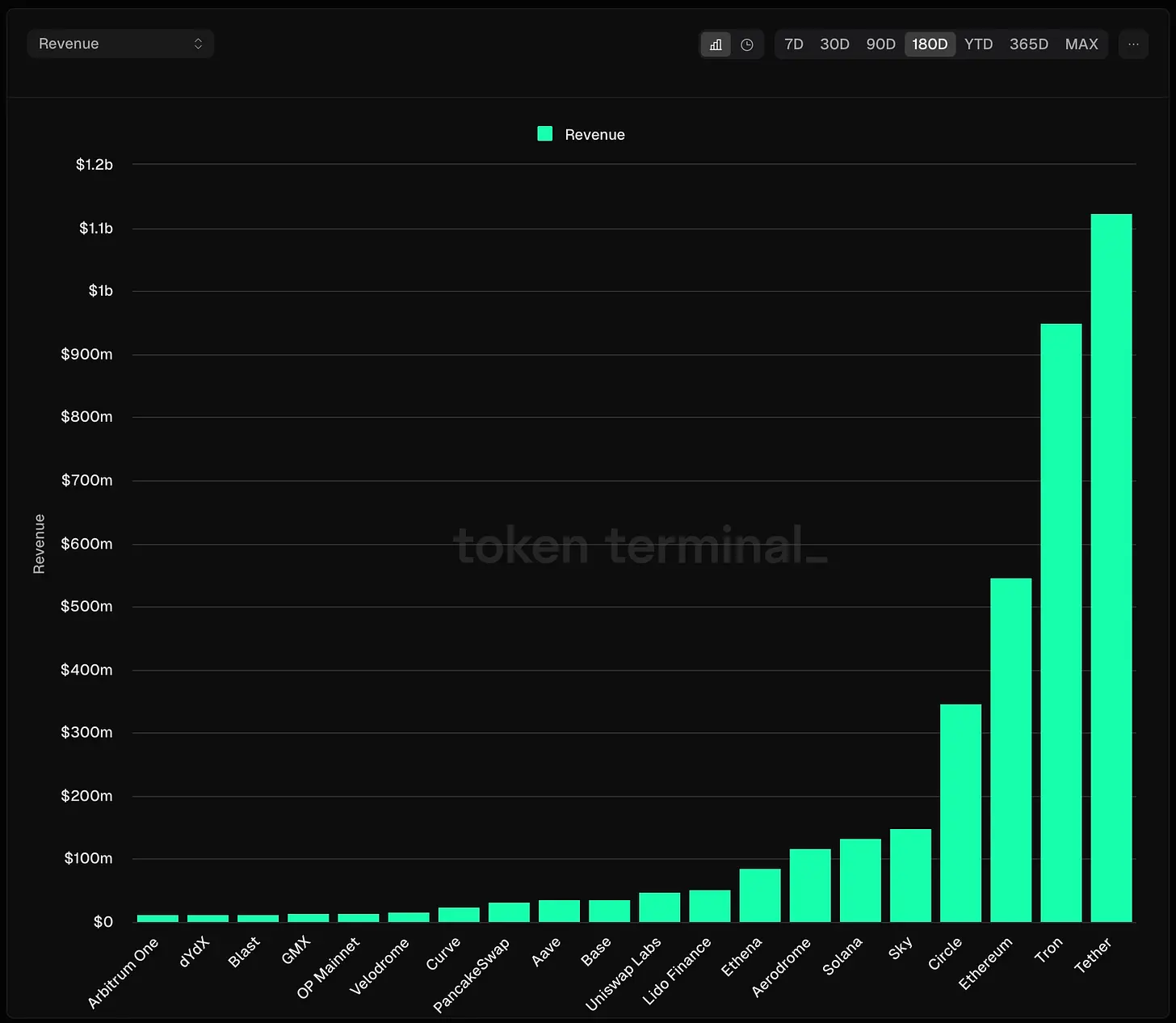
It's great to see projects like Tether, Tron, and ETH leading in this field, as they are independent blockchains/tokens that form the foundational layer of Web3.
When observing the fastest applications to reach $100 million in revenue, there is a strong correlation between real-world utility and the financial performance of projects.
Projects focused on real-world applications, such as decentralized exchanges and DeFi platforms, often experience faster growth.
Their ability to generate stable revenue through transaction fees, staking rewards, and a percentage of reward pools is a method that has helped them rapidly grow to nearly $100 million in revenue in such a short time.

Let's take a look at some of the most interesting projects currently.
1. Helium
Helium is one of the top-performing projects in 2024, focusing on mobile carrier services as an alternative to traditional service providers. It focuses on consumer scale and user onboarding, settling on Solana. The value of its token is related to network usage, not speculation.
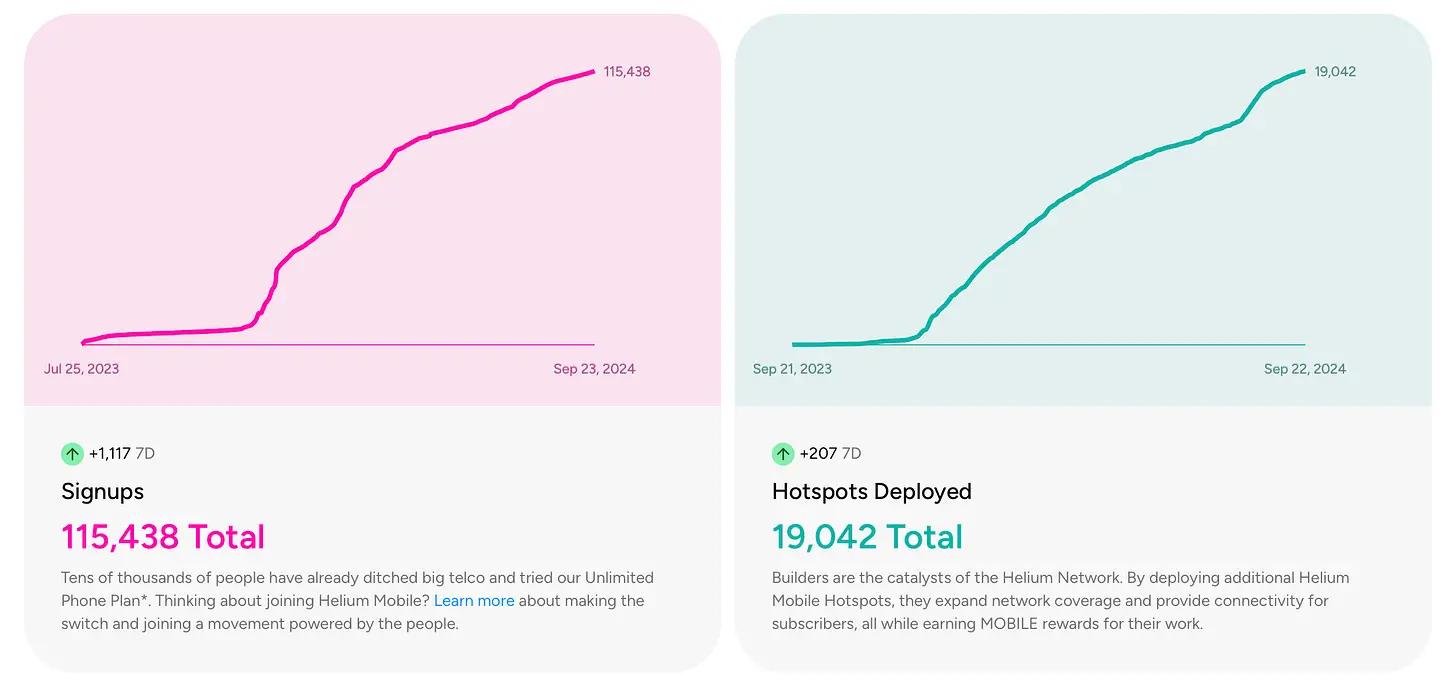
Since June, the network has attracted 756,000 users and transmitted over 19.1 TB of data. Most impressively, most users are not even aware that they are interacting with blockchain. The surge in registrations over the past year reflects Helium's strong push in getting more people to use and adopt it.
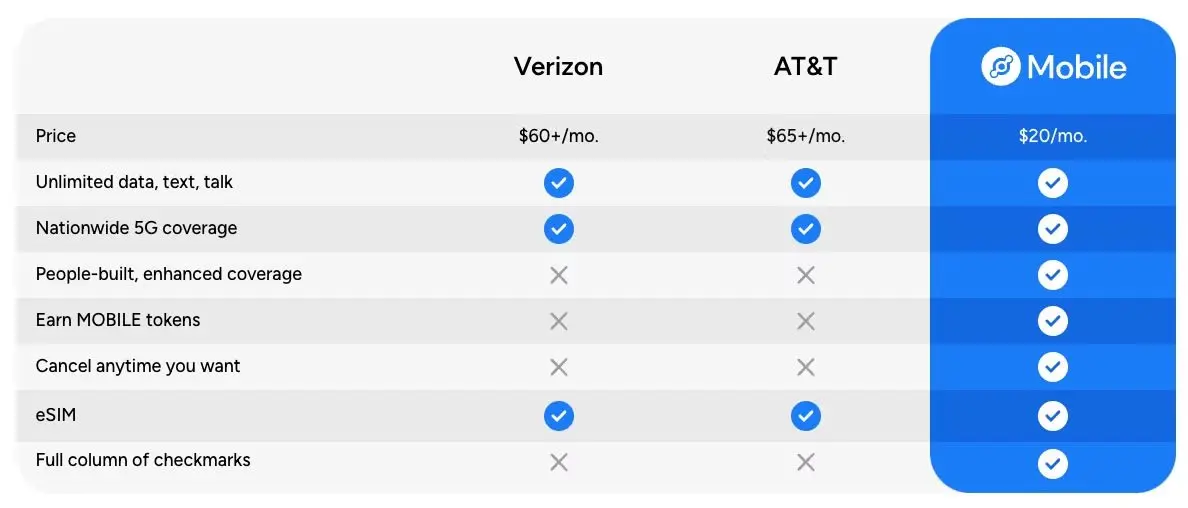
According to depin.ninja's statistics, Helium ranks first in recent revenue generation. They have done some amazing work, and it will be interesting to observe how revenue increases with the halving in 2025.
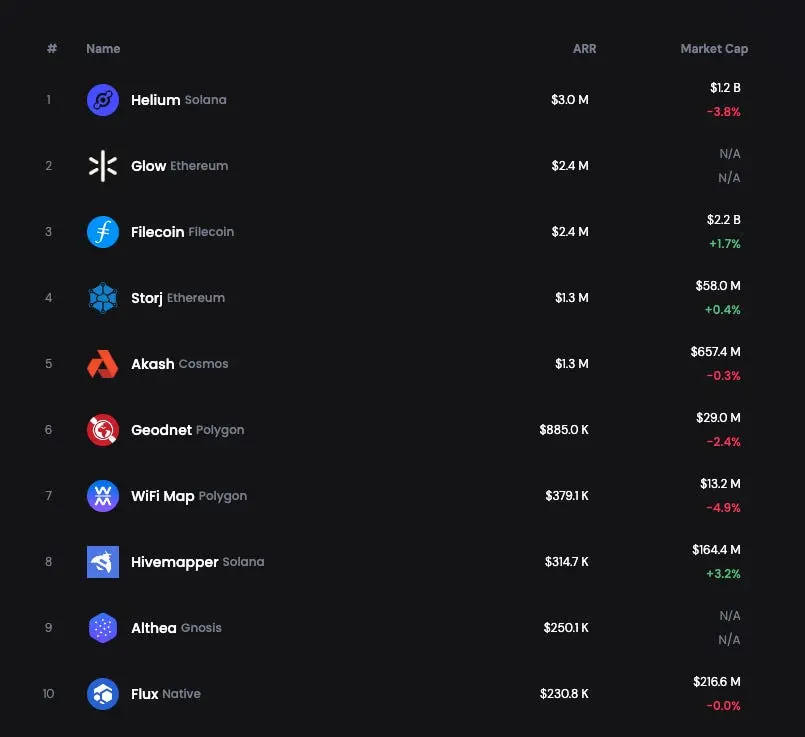
2. Decentralized Exchanges (DeX) (e.g., Uniswap and Jupiter)
Uniswap remains the largest decentralized exchange, consistently generating strong trading volume. However, with the recent surge in popularity of Solana, native decentralized exchanges like Jupiter are beginning to significantly capture market share from Uniswap.

Overall, the outlook for decentralized exchanges looks promising, with each platform generating fees for every transaction and handling significant trading volume. The total trading volume in the top five decentralized exchanges is close to $45 billion, an impressive figure compared to almost all other industries.
3. Farcaster
Farcaster may be the largest crypto social media platform, focusing on user-owned content and interactive experiences. Users do not rely on token speculation but pay for permanent storage of their accounts, helping the platform generate significant revenue.

It also benefits from support from the meme coin community and the involvement of high-risk investors ("degens"), gaining attention and support. Despite lower revenue compared to other industries, Farcaster remains a leading protocol in the crypto social space. It will be interesting to see how they expand to achieve their goal of 10 million users in the coming years.

4. GEOD
GEODNET is the world's largest Web3-based Real-Time Kinematic (RTK) positioning network, providing high-precision location services for Artificial Intelligence (AI), Internet of Things (IoT), and autonomous systems. By using Real-Time Kinematic (RTK), GEODNET aims to achieve 100 times higher location accuracy compared to traditional GPS. This enhanced accuracy is crucial for applications relying on device sensors (such as cameras, Light Detection and Ranging (LiDAR), and Inertial Measurement Units (IMU)), making it a key player in driving AI-driven autonomous systems.
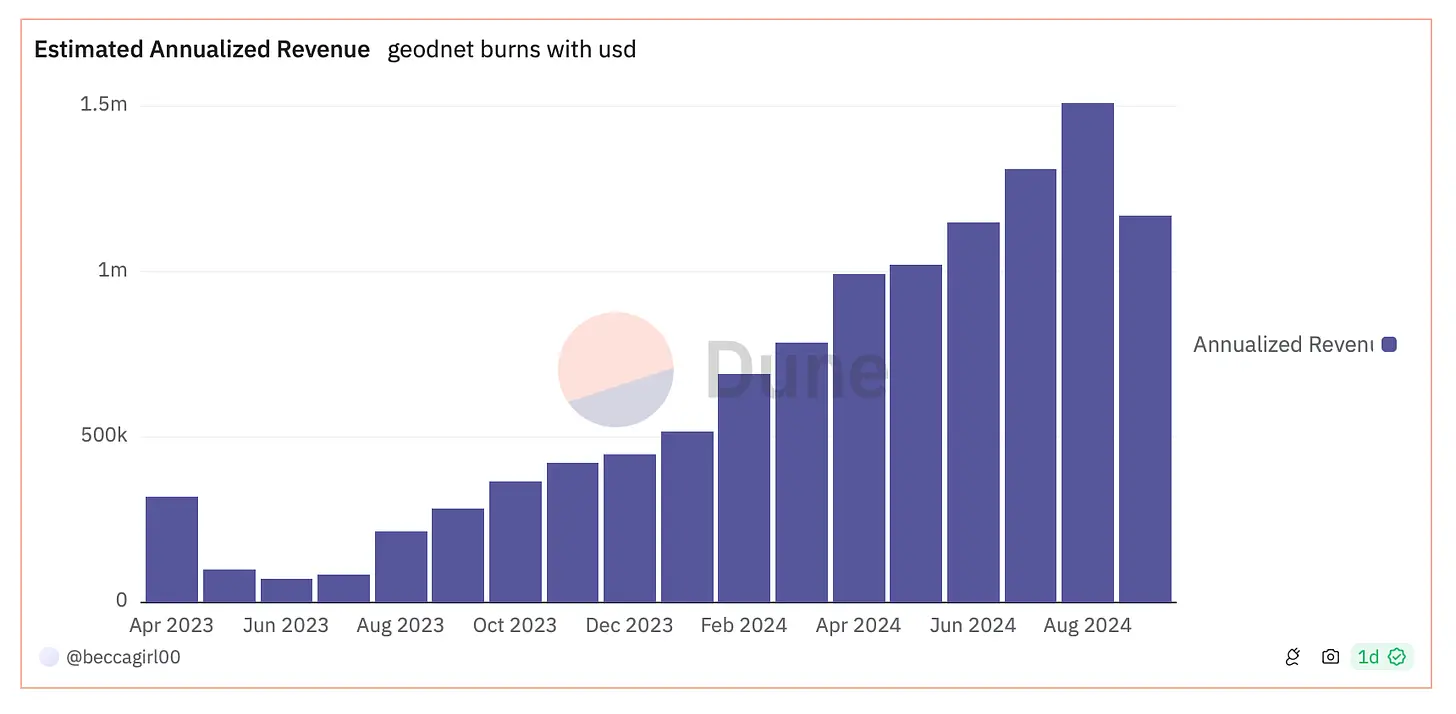
The network is rapidly growing, with over 9,000 miners deployed globally, and monthly revenue has been growing steadily at 10-15% since the beginning of the year.
GEODNET is expected to achieve an Annual Recurring Revenue (ARR) of $200-300 million by the end of the year, making it one of the largest high-margin decentralized physical infrastructure network (DePIN) projects with strong potential for further growth.
Their technology is not only more accurate but also 90% cheaper than competitors, providing broader global coverage.
Collaborating with partners like the U.S. Department of Agriculture, GEODNET is proving that long-term stable growth can yield significant results, with the company showing a 20x revenue growth from $5,000 per month to over $100,000.
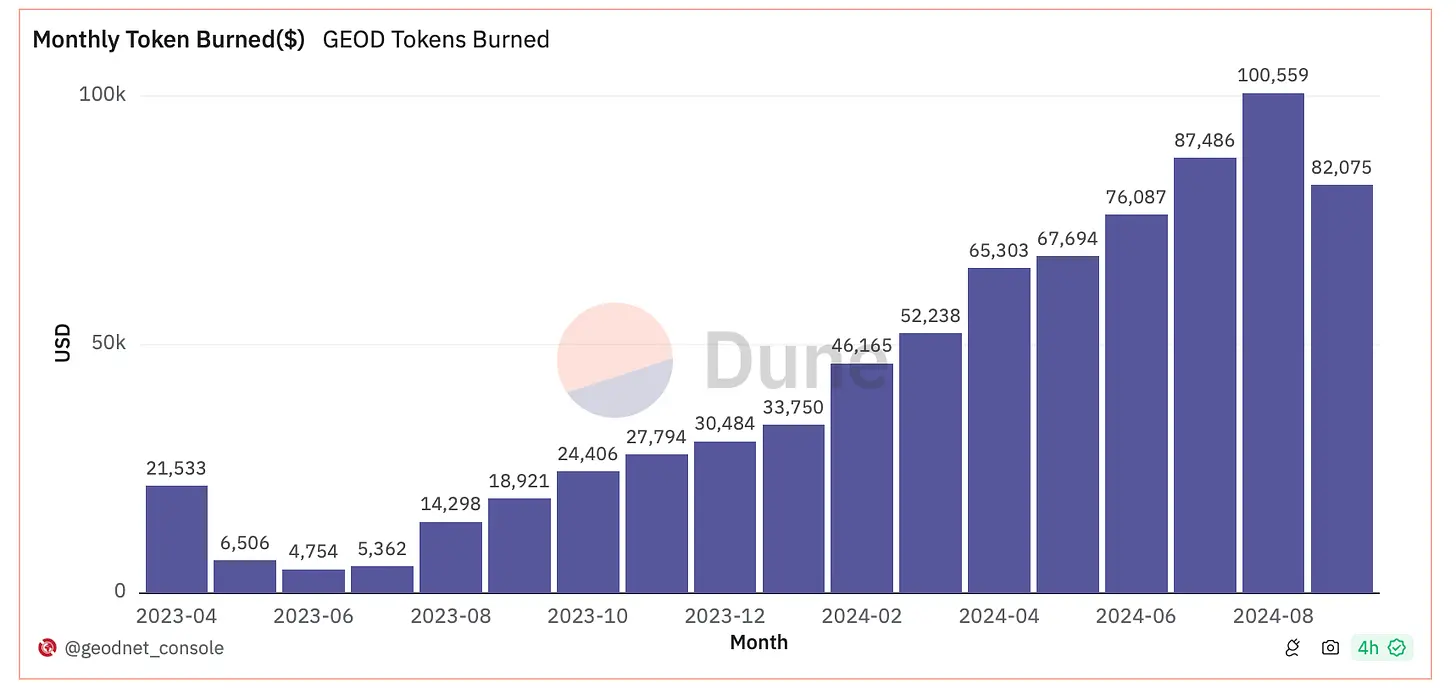
5. Across Protocol
Across Protocol is a cross-chain bridge that enables seamless asset transfers between different blockchains. It generates revenue by charging fees for these transfers, making its success directly related to the growing demand for fast and secure cross-chain liquidity. With more assets flowing between chains, especially with the increasing popularity of multi-chain ecosystems, Across has established a critical position in this field.
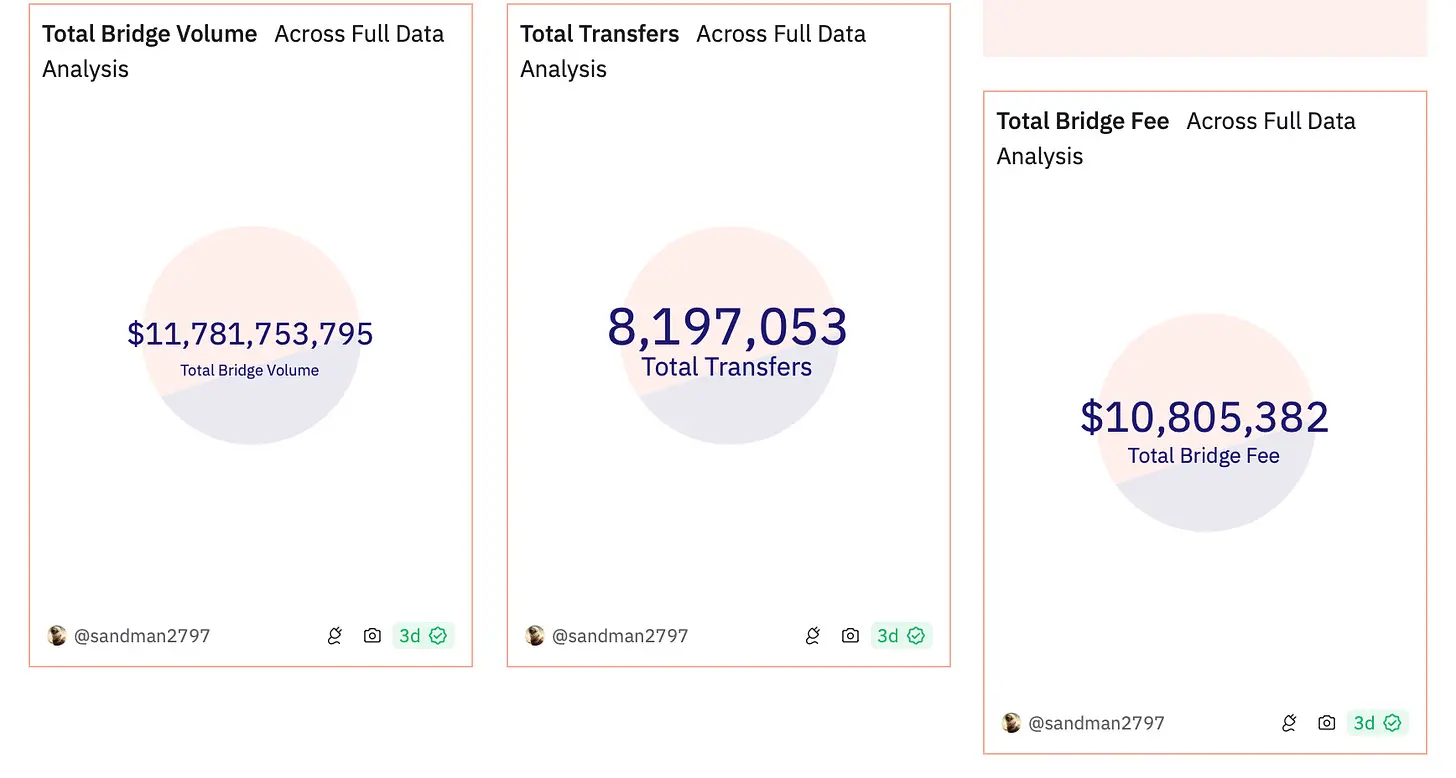
In the past month, Across Protocol has dominated Ethereum chain transactions, handling over 60% of all Ethereum bridging through JumperExchange. This strong performance demonstrates its growing influence in cross-chain operations. Leveraging "intents," a new cross-chain interoperability method, Across is setting standards for smooth and efficient user experiences when transferring assets between blockchains. It typically offers extremely low wait times, in seconds, compared to minutes for other providers.
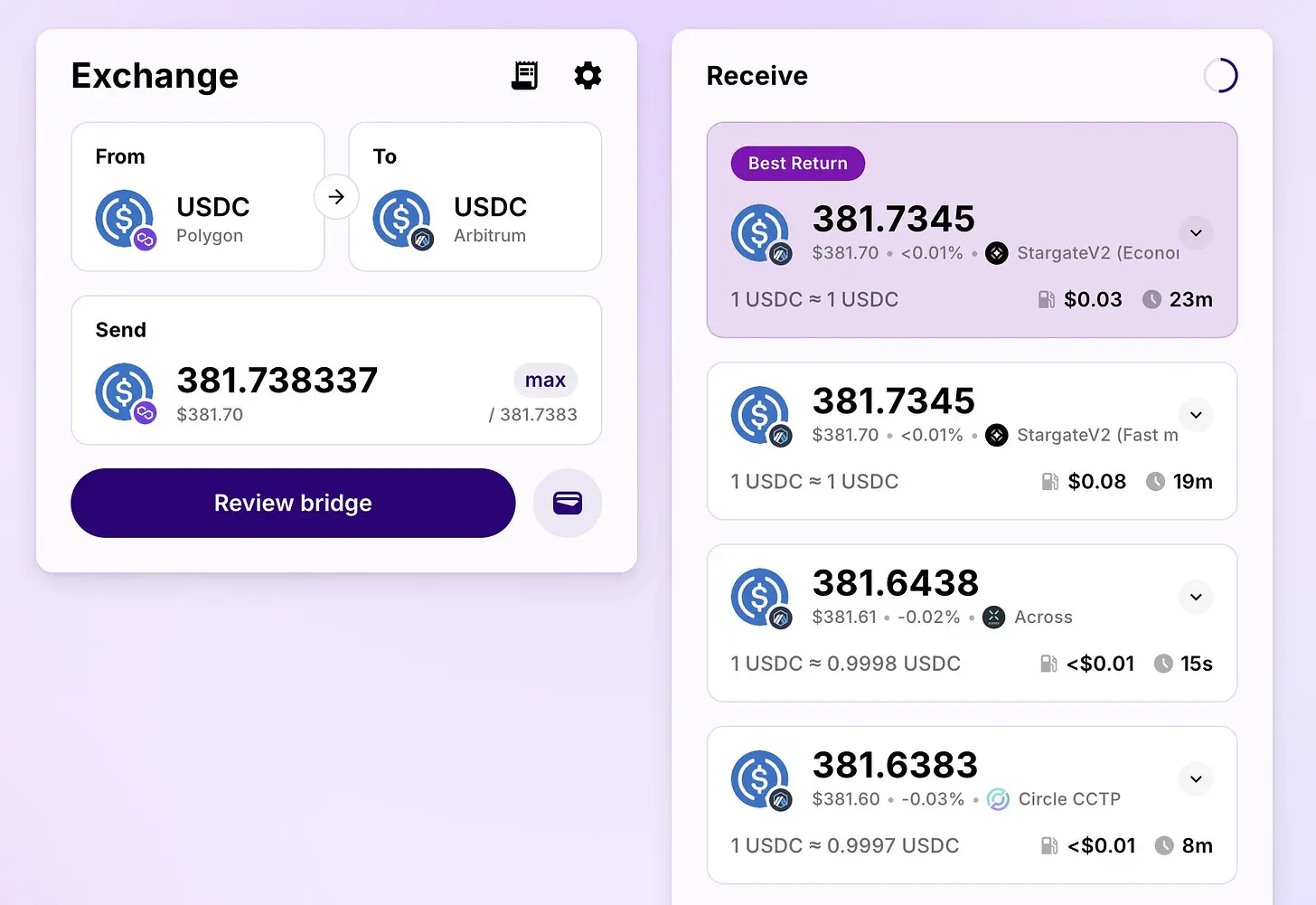
It is gradually rising in the competitive landscape of cross-chain transfer service providers.
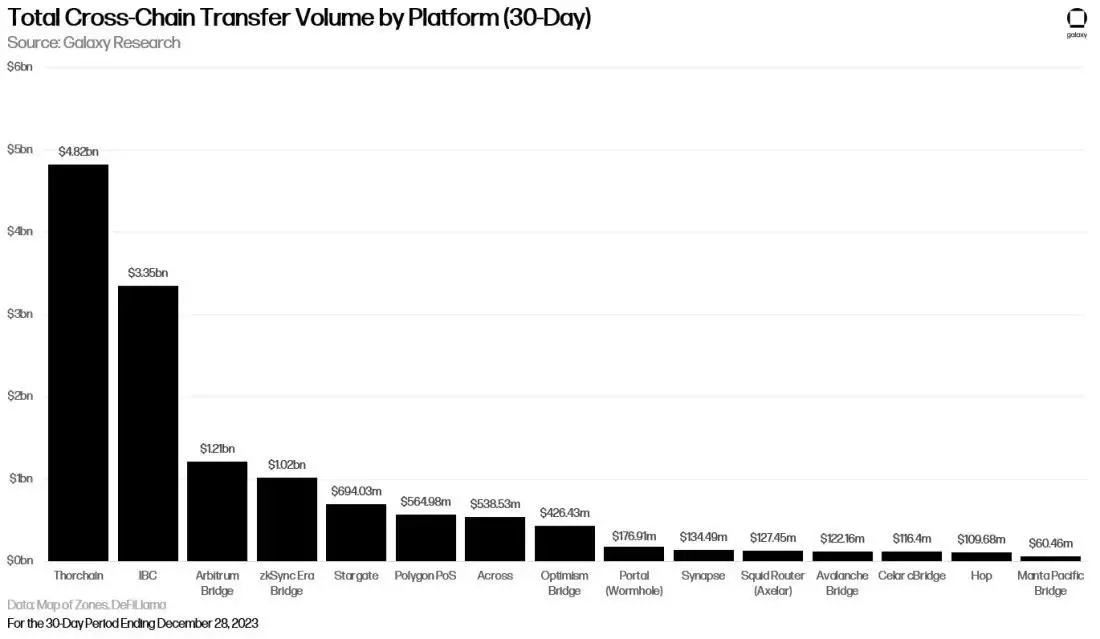
6. Kamino
Kamino focuses on optimizing liquidity management and provides a range of tools for users, including lending and leverage strategies. The platform has experienced significant growth, with Annual Recurring Revenue (ARR) approaching $14 million.
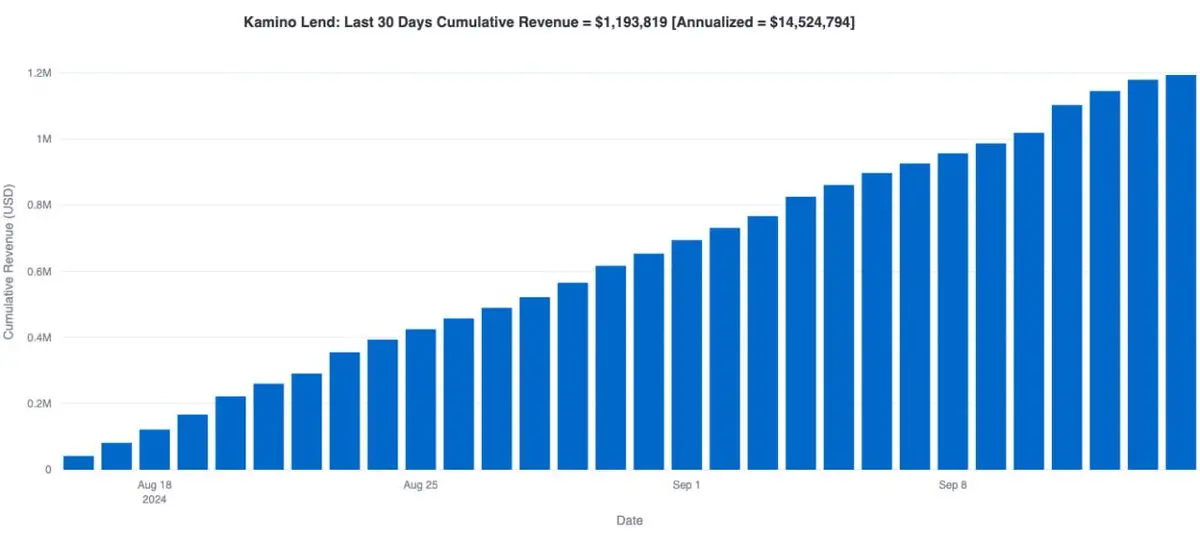
In the past year, Kamino has generated approximately $30 million in cumulative interest for users, highlighting its ability to provide stable returns through decentralized finance (DeFi) products.

7. Stablecoins (Tether & Circle)
Stablecoins have become essential in the Web3 space, with Tether (USDT) and Circle (USDC) leading the way. These two giants dominate the market, becoming the preferred stablecoins for traders, developers, and users. Their widespread adoption and liquidity make them pillars for many decentralized finance (DeFi) platforms.
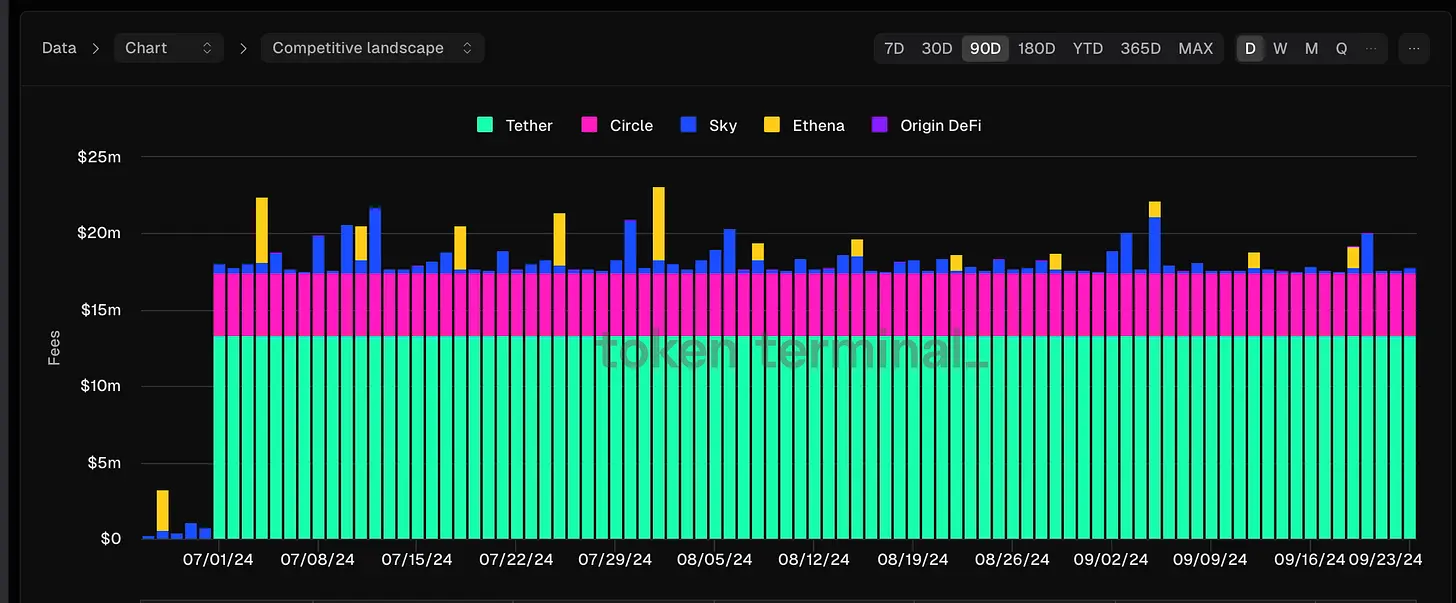
In particular, Tether, with its rapid rise and dominance in the financial ecosystem, is often compared to major Web2 financial companies such as JPMorgan, Visa, and Mastercard. It has quickly surpassed many traditional giants, leading in market coverage and integration with the crypto market.
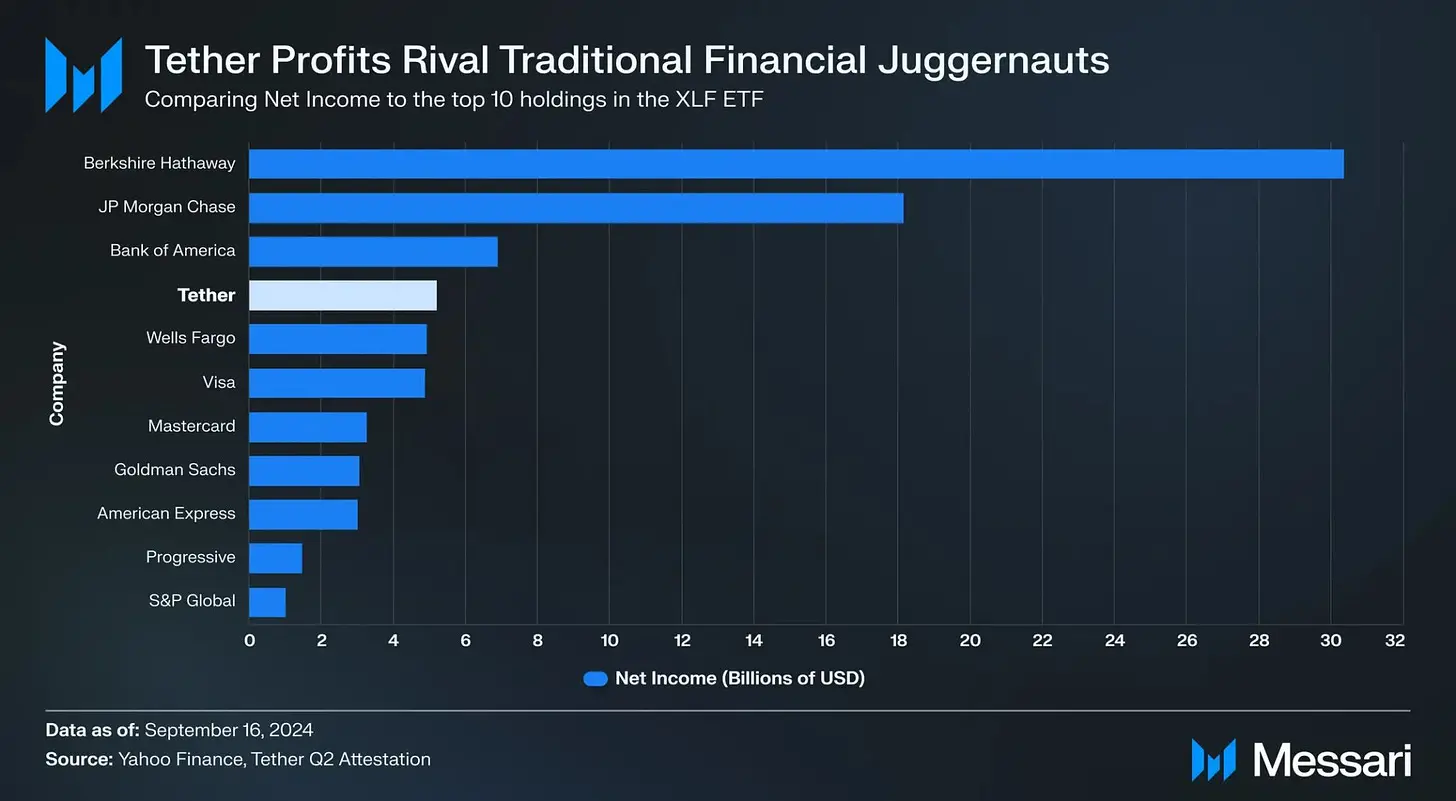
Tether and Circle consistently outperform other stablecoin providers and blockchain protocols, holding the largest market share in Web3. Their stability, liquidity, and integration across multiple chains and decentralized applications (dApps) set them apart, making them integral to the space.
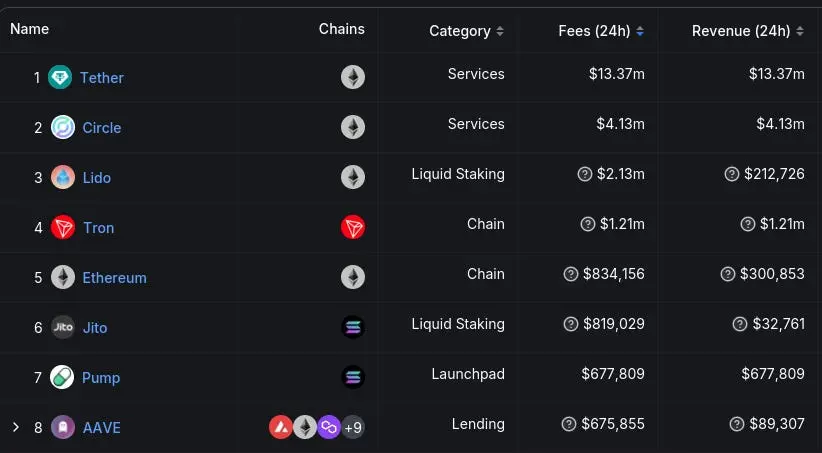
In summary:
These projects demonstrate the increasing importance of real-world utility in driving crypto revenue.
Whether through infrastructure, social, gaming, or DeFi, the future of Web3 will be shaped by projects that successfully combine their token economics with real-world utility and sustainable revenue models.
What Hasn't Succeeded?
Friend.tech is a good example, showing how a project can quickly generate hype and revenue but fail to establish long-term sustainability. It's a good example of "why not all profitable startups succeed?"
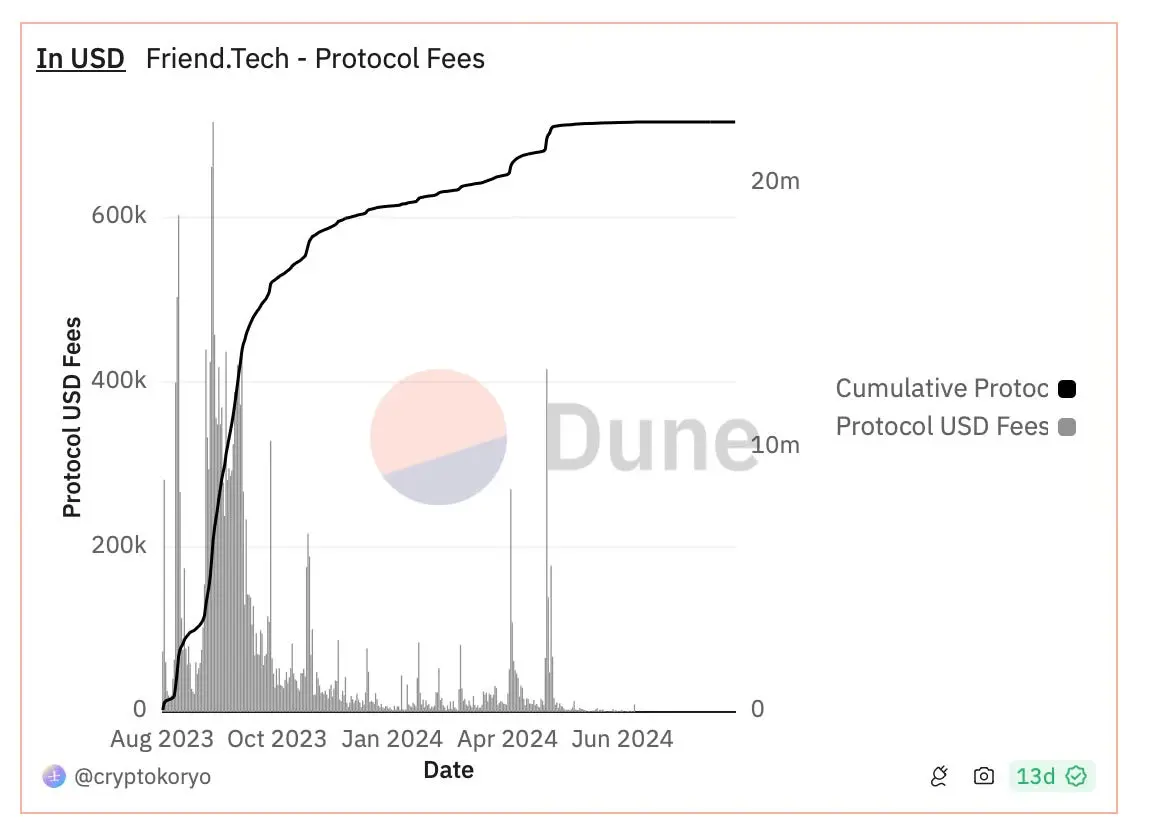
The rise of the app stemmed from users purchasing "keys" (shares) from others, hoping that the value of these "keys" would increase as the popularity of the users grew, and more users would join over time. However, due to the lack of real utility beyond speculative trading, users quickly lost interest once the initial excitement faded. Additionally, the initial hype can also be attributed to the team's announcement of airdrops for early participants—however, after the airdrop, the platform had almost no practicality and user usage.
Token-driven economies are inherently fragile—users seek quick profits, but they will leave if substantial value is not provided. In contrast, platforms like Uniswap and Helium sustain long-term engagement by providing real-world utility, proving that sustainable success comes from creating lasting value rather than speculation. Friend.tech lacks this foundation, with little to attract users to continue participating once the speculative hype fades.
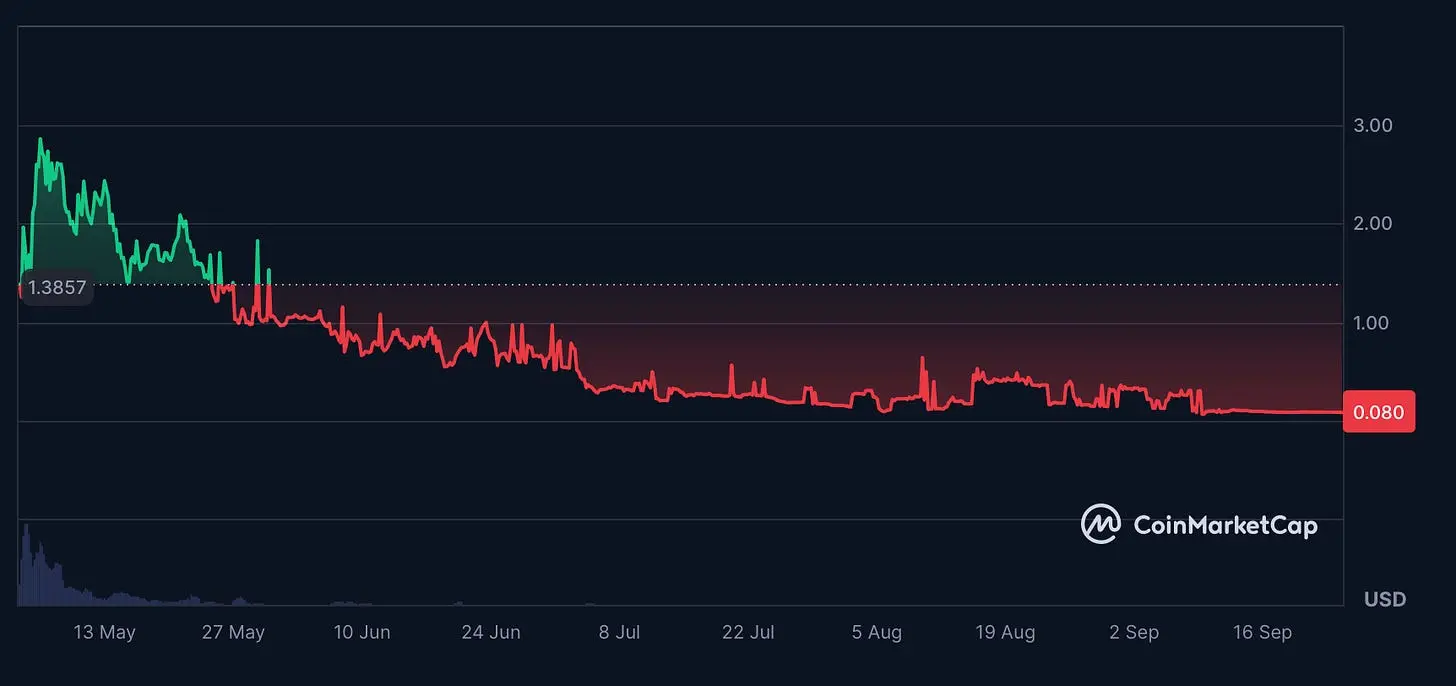
The conclusion is clear: to thrive, Web3 platforms need to provide substance beyond speculation.
Why Token-Reliant Projects Encounter Long-Term Difficulties?
Projects overly reliant on token speculation may achieve rapid success but struggle to maintain momentum. The token prices in these ecosystems are often influenced by speculation and trading, and without a solid practical foundation, users quickly lose interest. Once the excitement fades, users realize the lack of deeper value, causing token prices to collapse and users to exit, creating a vicious cycle.
This issue is evident in Axie Infinity, a game that relies on a dual-token system to support its growing player base. As the user count continues to rise, the economy becomes overly inflated, and token rewards cannot sustain user growth. Eventually, the entire system collapses as the token economy fails to keep up with the rapid player growth.
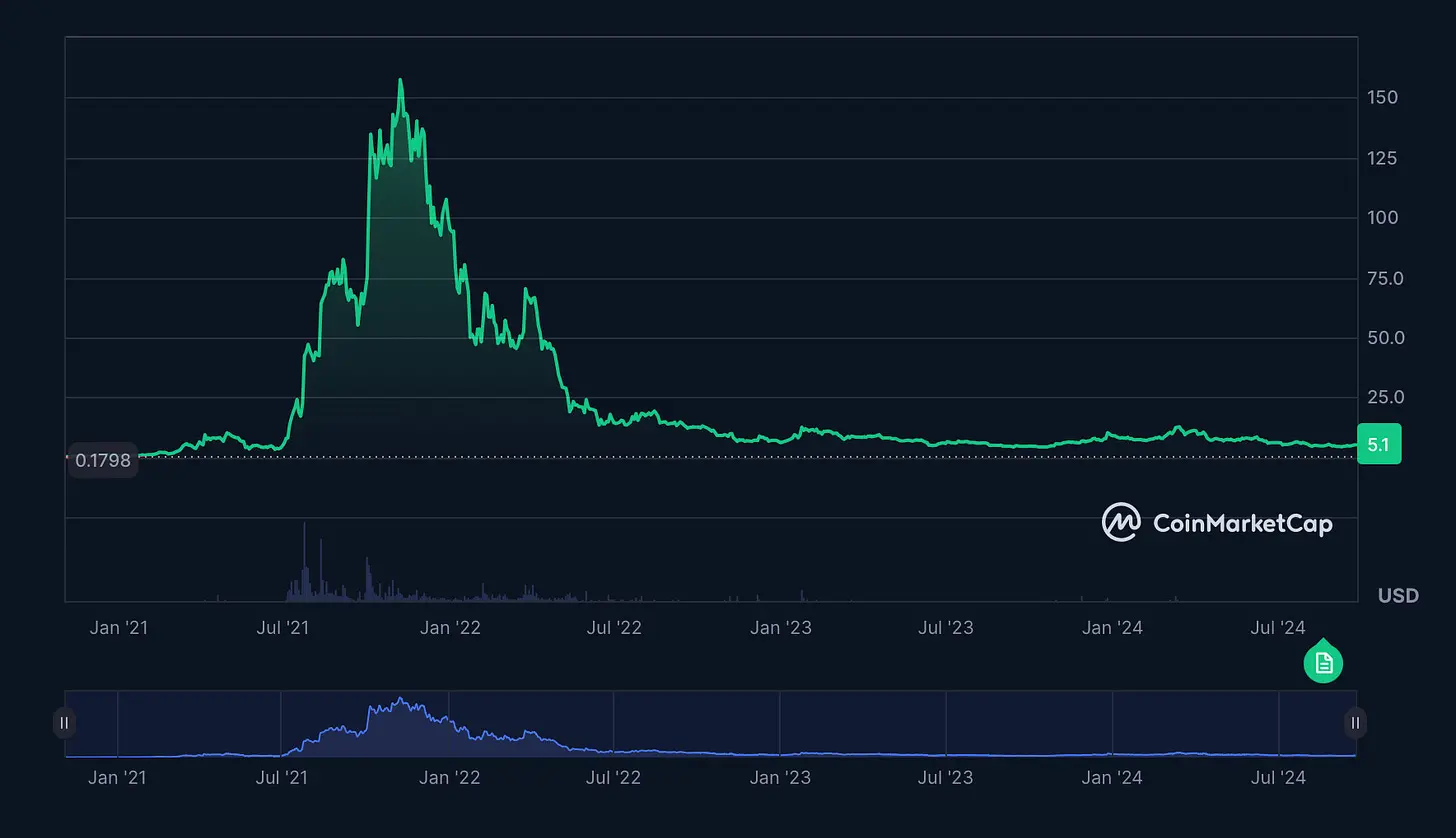
Chart of Axie Infinity
A similar problem arose with STEPN, a fitness app that initially attracted users through token rewards for physical activity. However, as token supply increased and prices fell, user engagement declined, exposing the fundamental flaw of relying solely on token incentives to drive long-term participation. While Axie generated substantial revenue through marketplace fees and in-game purchases, its reliance on token growth and user expansion ultimately led to failure when growth slowed down.
Similarly, STEPN, initially attracting users through token rewards, failed to maintain user engagement after token prices fell due to oversupply. While Axie generated revenue through purchases and marketplace fees, its business model relied too heavily on user growth and token rewards, ultimately leading to failure when growth slowed down.
Web3 Games vs. Web2 Games
The challenges faced by projects like Friend.tech and Axie Infinity highlight a larger issue in the Web3 gaming space. Compared to traditional Web2 games, Web3 games face challenges in revenue generation. For example, a recently released Web2 game earned $6 billion in its first week—Web3 games have yet to come close to such figures. This is not because Web3 games are a bad concept, but because the technology has not been fully leveraged, resulting in missed opportunities.
One major issue is that many Web3 games still overly focus on token-based systems, where players are incentivized through financial rewards rather than the actual gaming experience. This overreliance on token economics creates unrealistic expectations, and when the gaming experience fails to meet the advertised expectations, players become disappointed. To truly compete with Web2 games, Web3 projects need to shift their focus to make the gameplay itself engaging and enjoyable. Technology should be used to enhance the gaming experience, rather than being the central focus.
To succeed, Web3 games must shift towards a gameplay-centric model. Blockchain technology has the potential to provide innovative experiences, but it should be used as a tool to enhance immersion, rather than being the driving force of the entire economy. Only when the focus shifts from token economics to creating genuinely fun and engaging player experiences can Web3 games fulfill their potential.
So, what changes should be made?
Successful Financial Metrics
Web3 projects must move beyond a sole focus on token prices. Just as traditional tech companies track key metrics such as revenue, profit margins, and active users, Web3 projects should also aim to achieve this by measuring actual user activity and value creation.
The focus should be on identifying and defining a set of key metrics specific to the industry and business, which can only be achieved through more specific benchmarking against Web2 counterparts and active communication with customers.
User-Centric Design
Another significant shift is a focus on User Experience (UX)—intuitive, user-friendly design and interaction with the technology.
Web3 platforms need intuitive, user-friendly designs to ensure long-term growth. Currently, most experiences are complex, involving complicated wallet management and steep learning curves, making it easy for new users to drop out.
Simplifying onboarding processes and improving wallet usability are crucial steps. Excellent projects like Privy, Dynamic, and Turnkey are dedicated to addressing these issues.
Long-term user engagement is equally important. Platforms must provide real value to ensure sustained returns, rather than just speculative rewards. For example, Audius enables artists to engage with fans in meaningful ways, adding value beyond token incentives. This, combined with appropriate technological solutions, is what is needed.
Challenges of Utility Implementation
One of the biggest challenges is scalability. Blockchain often struggles to handle a large volume of transactions at low cost. For example, high gas fees on Ethereum have hindered wider adoption, leading developers to turn to other chains like Sui and Solana.
Interoperability is also a persistent issue, as many platforms operate in isolation. Cross-chain solutions like Polkadot and Cosmos are making progress, but they have yet to become market leaders.
Finally, regulation is always a major challenge. While the situation has eased with ETF approvals, concerns and ambiguous legal boundaries still need to be addressed.
Conclusion
Web3 has tremendous potential, but to achieve lasting success, it must move beyond token speculation. Projects like Friend.tech and Axie Infinity demonstrate that while speculation can bring quick returns, it does not equate to sustained long-term growth.
To thrive, Web3 platforms must focus on creating real value—this includes:
Building genuinely practical products
Tracking meaningful metrics such as active users and transaction volume, not just token prices
Building for users
Creating seamless and engaging experiences for users
Prioritizing product utility over speculative trading.
Simplifying the user experience and addressing real needs will foster long-term user engagement. Overcoming challenges such as scalability, interoperability, and regulations is crucial for broader adoption. The future of Web3 lies in projects that combine innovative technology with practical, user-centric solutions to create lasting impact beyond token economics.
Disclaimer
The editor of this post holds investments in HNT (Helium) and GEOD (GEODNET) but is not the author of this post. Blockcrunch Podcast ("Blockcrunch") is an educational resource aimed at providing information for reference only.
免责声明:本文章仅代表作者个人观点,不代表本平台的立场和观点。本文章仅供信息分享,不构成对任何人的任何投资建议。用户与作者之间的任何争议,与本平台无关。如网页中刊载的文章或图片涉及侵权,请提供相关的权利证明和身份证明发送邮件到support@aicoin.com,本平台相关工作人员将会进行核查。




